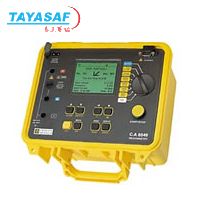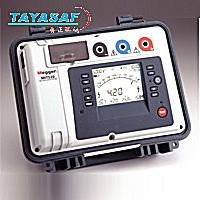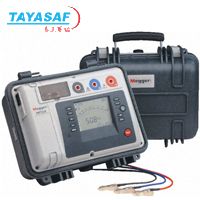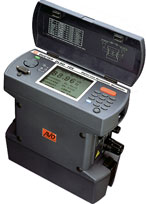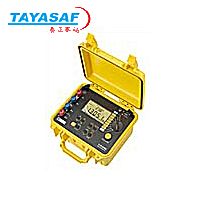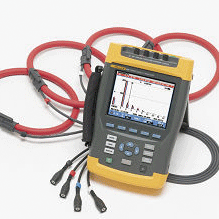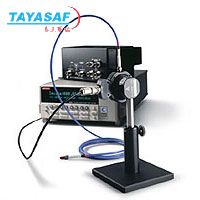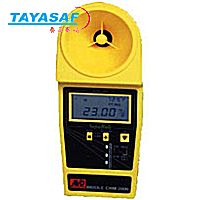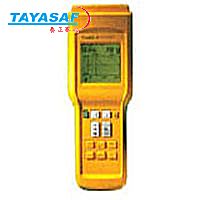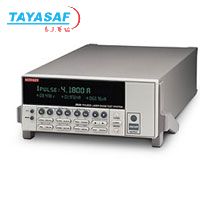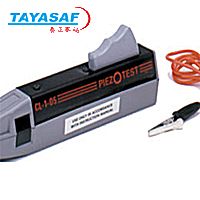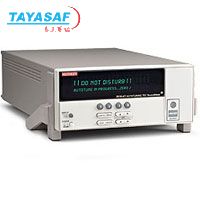BDS-256XL电池诊断系统
添加时间:2010-9-17 编辑:C055 阅读:次
- 产品名称:BDS-256XL电池诊断系统
- 产品定货号:ME-06229-00
Battery diagnostic systems (BDS) continuously monitor all critical battery parameters, verify the integrity of the connected battery system, and alarm on any out-of-tolerance condition. Testing includes proactive, internal DC cell resistance measurements at programmed intervals recommended by IEEE standards. By tracking increases in internal cell resistance, the BDS predicts if the battery system will perform during a power outage.
The BDS-256XL Battery Diagnostic System
The BDS-256XL is a modular system that can monitor virtually any UPS battery configuration. The BDS-256XL consists of a Controller, Data Collection Module, and Resistance Test Module.
Interface to the BDS-256XL is done using the Alber Battery Monitor Data Manager (BMDM) software. The Battery Monitor Report Generator program creates reports from collected data.
The CM-XL8 Controller
The Controller, the brain of the system, coordinates alarms and traffic to and from the other system components. It can monitor up to eight strings of 256 cells on independent UPS's, for a total of 2048 cells per Controller. Its nonvolatile memory can hold up to a year's worth of data. The built-in power supply provides 24VAC for all components in the system.
The DCM-XL48 Data Collection Module
The Data Collection Module (DCM) is a scanning voltmeter that acquires overall voltage, cell voltage, current, and temperature readings from the monitored battery string. The DCM can monitor cells or blocks from 1V to 16VDC. The DCM compares captured data with preset thresholds and alerts the user if any parameters are in violation. Each DCM can measure up to 48 cells or battery blocks per string. DCM's can be connected in series to monitor up to 256 cells per string. The DCM also controls the load module during a resistance test.
The RTM-XLR Resistance Test Module
The Resistance Test Module (RTM) provides the load during the patented resistance test. Without this component, the monitor system could not provide the high reliability and repeatable results that Alber customers rely on.
The BDS-256 System Features
• Monitor up to 256 cells/modules per string. 2V cells, NiCd cells, 4V, 6V, 8V and 12V modules are supported.
• Overall voltage, cell/module voltages, current, and temperature are continuously scanned and compared with programmed alarm levels.
• Internal DC resistance tests are performed and compared to programmed alarm levels. All data is saved.
• Overall voltage, cell/module voltages, current, and temperature readings are saved.
• Discharges are detected and data saved. All parameters are scanned every four seconds during a discharge.
• Discharges can be viewed in real time locally or remotely during the discharge event or later replayed in real or accelerated time.
• Alarm events trigger an indicator, dedicated contact closure, programmed contact closure, and dial-out notification. All battery parameters can be set to page, fax, print, and/or sound an alarm.
• Communication via network, modem, serial or USB. Optional TCP/IP interface for network or Internet communication. Industry standard MODBUS protocol interfaces to third party, building management systems.
• No on-site computer required.
• Modular design easily expands to monitor an unlimited number of strings. When used with the MPM-100, virtually all battery configurations can be managed with one software package.
• Digital input/output option permits monitoring up to 16 inputs and up to 8 user-programmed outputs.
• Monitor Load Control option enables the monitor system to control an Alber Continuous Load Unit (CLU) for performing battery capacity testing.
• Automatically poll and retrieve data.
• Reports can be e-mailed and then viewed using the free downloadable Alber Archive Reader.
• Faulty cells detected during an unplanned discharge event can be reported in real time.

 泰亚赛福 —— 世界领先的检测仪器集成供应商
泰亚赛福 —— 世界领先的检测仪器集成供应商 


 您当前的位置:
您当前的位置:

 加入对比
加入对比


